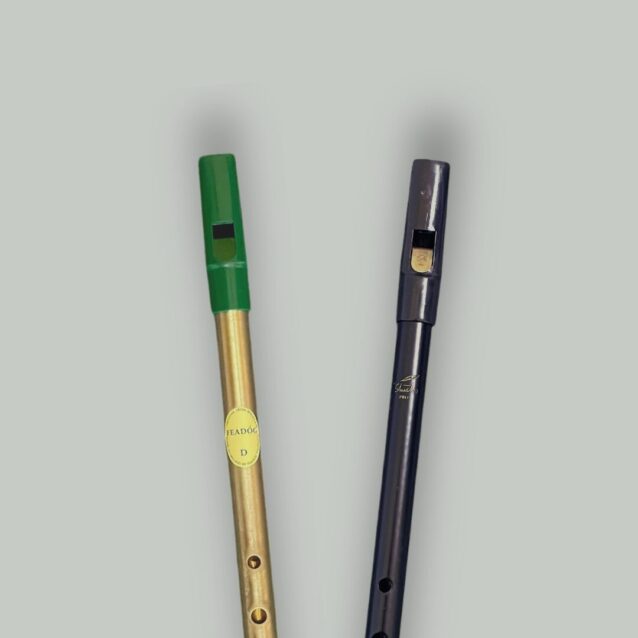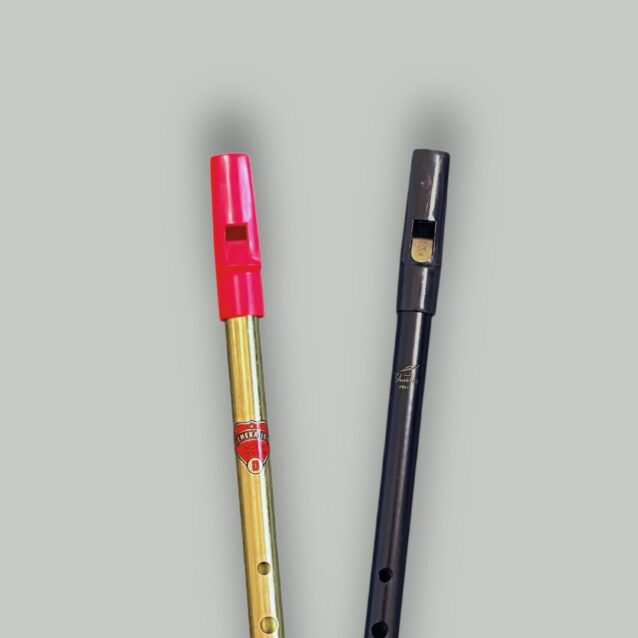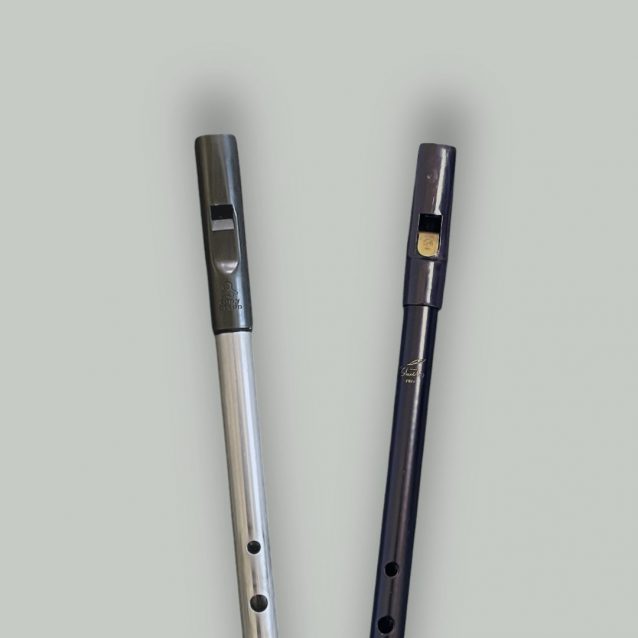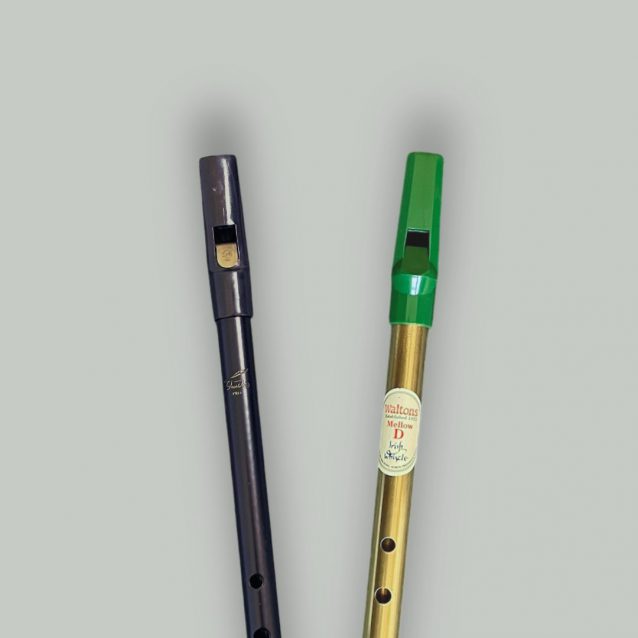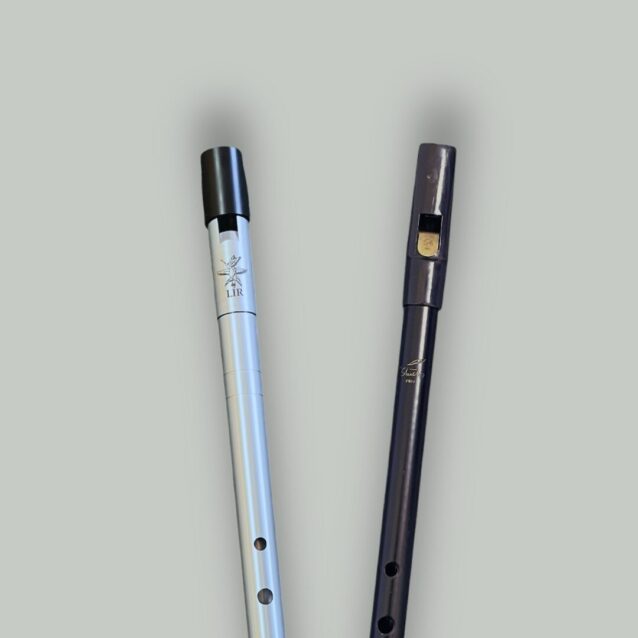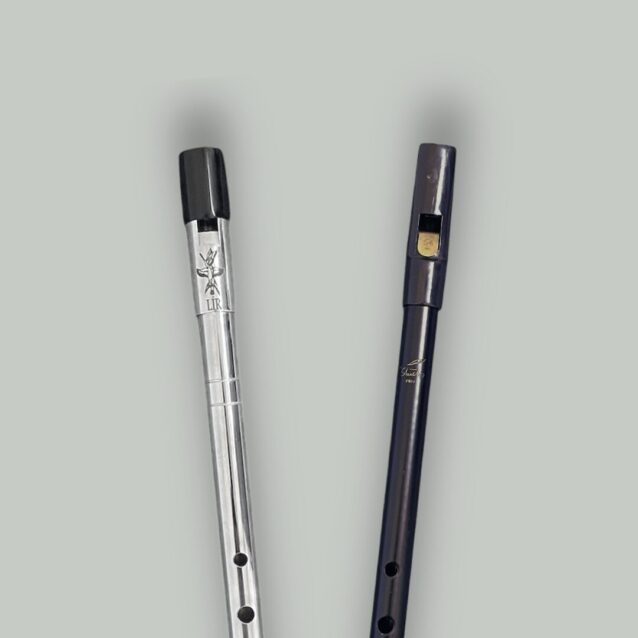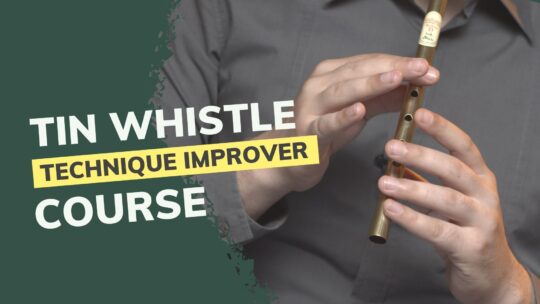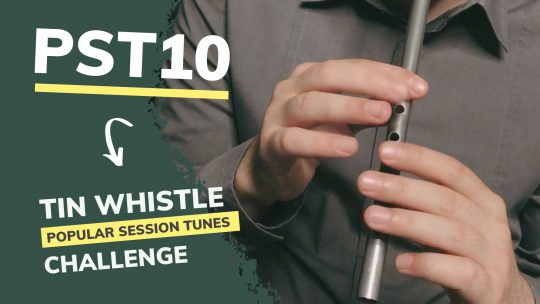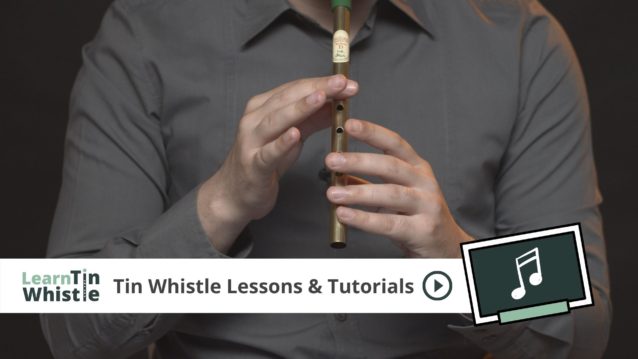Shush Instruments is a small maker based in Sheffield, UK, and their whistles were designed with a clear goal in mind — to be one of the quietest (yet reliable) tin whistles. In this review, we’ll take a closer look at how well it delivers on that promise and where it fits in the market.
Design & build
| Model: | Shush PRO |
|---|---|
| Key: | D (high/soprano) |
| Material: | Brass (black painted) |
| Mouthpiece: | Plastic |
| Windway type: | Straight |
| Length: | 297mm (11.69″) |
| Weight: | 45g (1.58oz) |
| Bore diameter: | 12mm (~ 0.47″ or 15/32″) |
| Tuneable: | Yes |
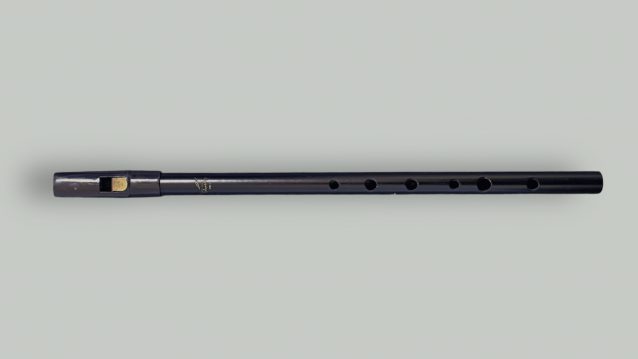
From a construction standpoint, the Shush PRO appears nearly identical to a standard Feadóg whistle. It’s unclear whether the exact same template was used or if it’s a slightly tweaked version of an original Feadóg, but the resemblance is strong. The body is made of brass with a matte black coating that gives it a sleek, modern look.
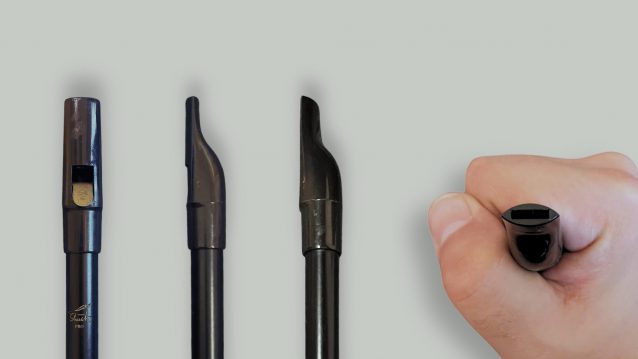
It features a classic black plastic mouthpiece with a standard straight windway. What really sets this model apart — and likely contributes to its quieter, more mellow tone — is a thin brass plate inserted into the window cutout, as well as some added material packed into the cavity inside the mouthpiece.
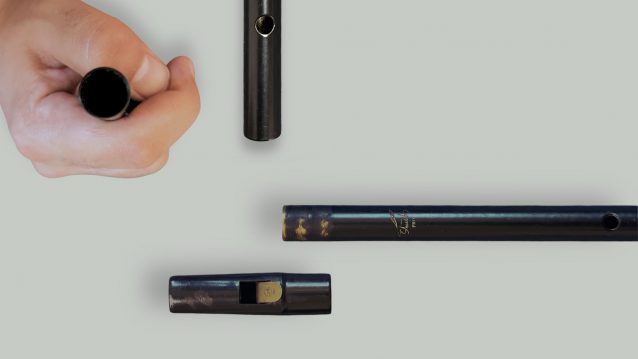
The head is not glued on and can be removed, which means the joint effectively works as a tuning slide. So the whistle is tuneable right out of the box.
The bore diameter follows the standard narrow-bore D whistle profile, but it feels slightly heavier in the hand. Whether that’s due to the matte black coating or a slightly thicker brass wall is hard to say, but either way, it adds a sense of sturdiness to the overall feel.
Shush PRO – Sound samples and demonstration
The video below features samples from both octaves, starting with slower melodic phrases and then moving into faster tunes to show how the Shush PRO D responds in different playing contexts.
First off, this whistle is noticeably quieter — although, due to YouTube’s audio normalization, the reduced volume does not come across as clearly in the video. What you can hear, though, is that the tone is darker and haunting, with a slightly muffled feel. It’s a very pure sound, with little breathiness or chiff — just a hint of edge, like subtle overtones peeking through.
Ornaments come through reasonably well, but they follow the character of the core tone: soft and tucked-in rather than bright or punchy. The tone stays nicely balanced across all notes, though, as with most whistles, there’s still a noticeable difference in volume between the lower and upper octaves.
Tuning is solid overall. C natural plays in tune using the standard “OXX OOO” fingering with slightly reduced breath pressure, or alternatively, by blowing a bit more strongly with the “OXX XOX” fingering.
How it handles from a player’s perspective
In short, Shush Instruments have truly succeeded in creating the quietest whistle out there — but they’ve also made real improvements in tone stability and overall playing feel.
Compared to entry-level whistles like the Generation or Feadóg, the Shush PRO is still an easy blower, but it offers a bit more backpressure, which gives you easier control. It’s nearly impossible to overblow, which is great for beginners, though the trade-off is that you won’t have much flexibility to shape the tone through breath pressure, as however you blow it will sound fairly similar tone-wise.
All in all, it’s an excellent whistle for everyday (or late-night) practice — especially when you don’t want to bother your housemates or neighbours.
Your thoughts?
Have any questions or impressions about the Shush PRO? Feel free to drop a comment under the Shush PRO tin whistle review video on YouTube. We check in regularly and are always happy to chat, answer questions, or hear your experience with the whistle!
Shush PRO whistle comparisons
Below are a few quick sound comparisons between the Shush PRO and other tin whistles. Each clip is recorded using the same microphone and settings to give a fair impression of tone and character, with raw, unprocessed sound.
View more Shush PRO comparisons
Please note: due to YouTube’s automatic audio normalization, real volume differences between whistles are effectively removed. That’s actually helpful in this case — since louder sounds are often perceived as better to the human ear on a subconscious level, this allows you to focus more objectively on tone, texture, and response.
Where to buy this whistle
If you’re interested in picking up this whistle, here are a few trusted places where you can find it. Prices typically range around $70, depending on the shop and region.
- Shush Instruments (UK, ships worldwide)
- BigWhistle (UK, ships worldwide)

